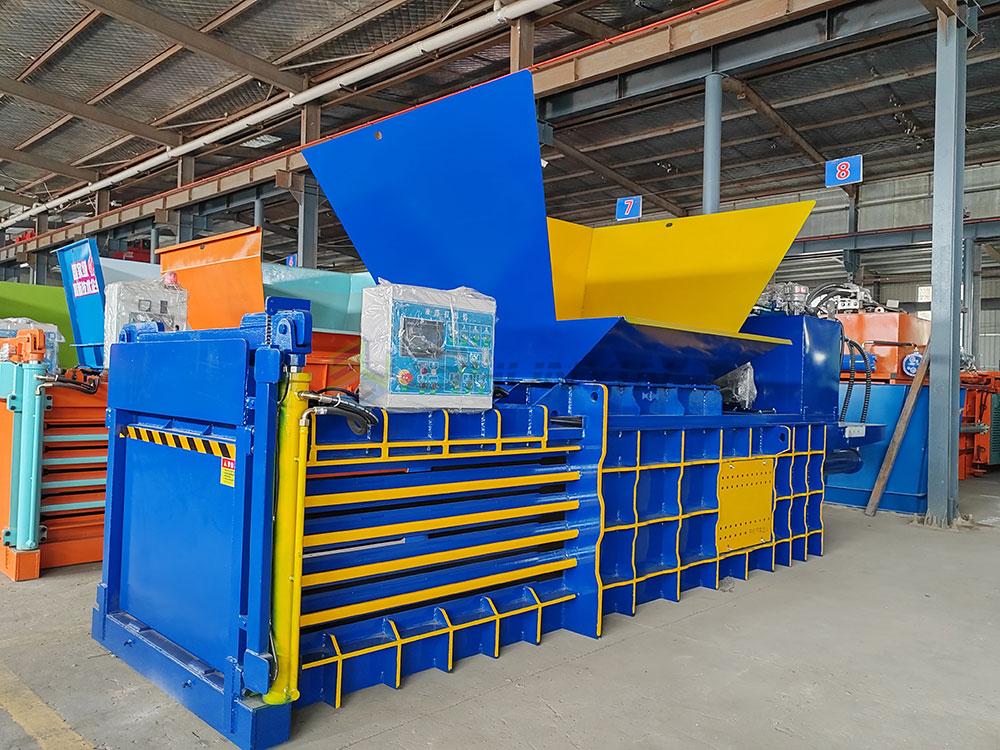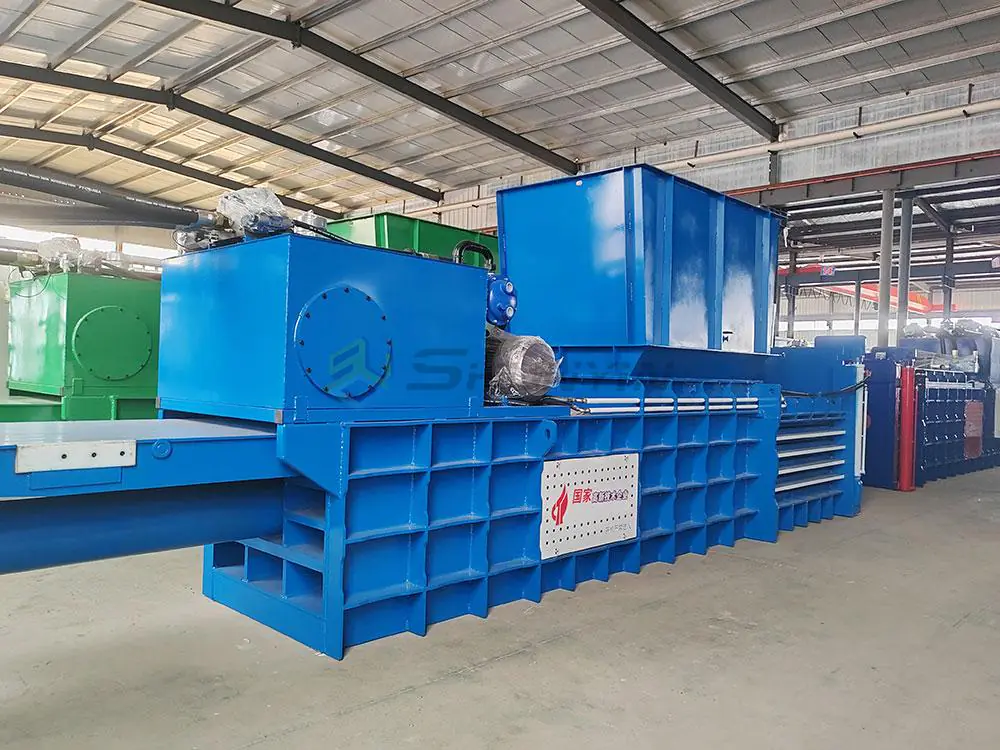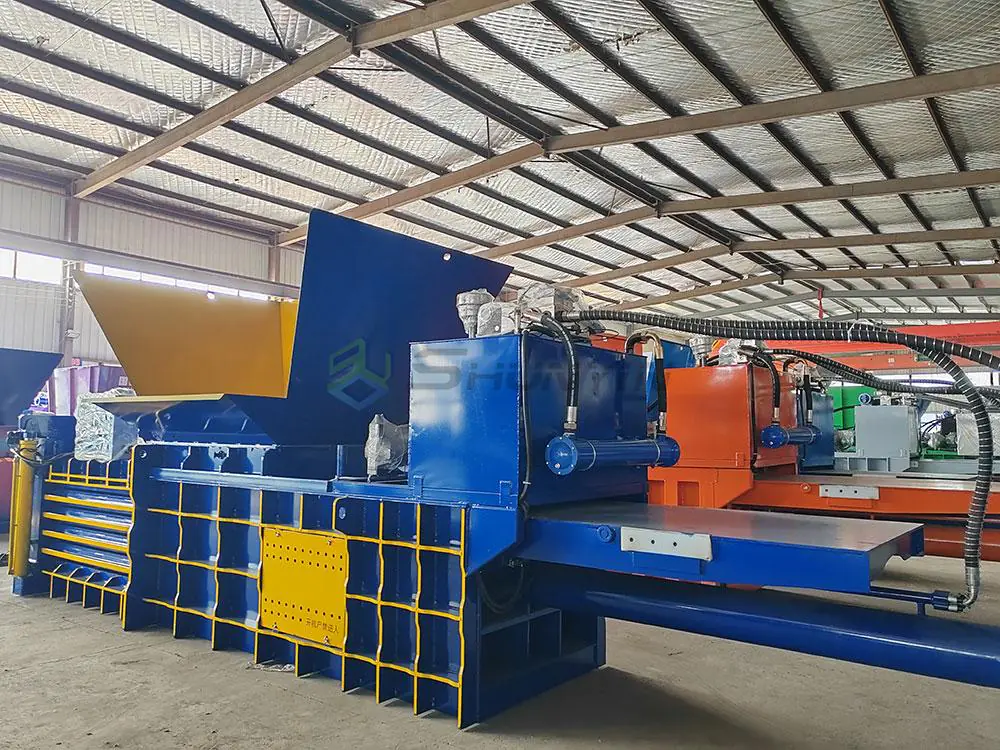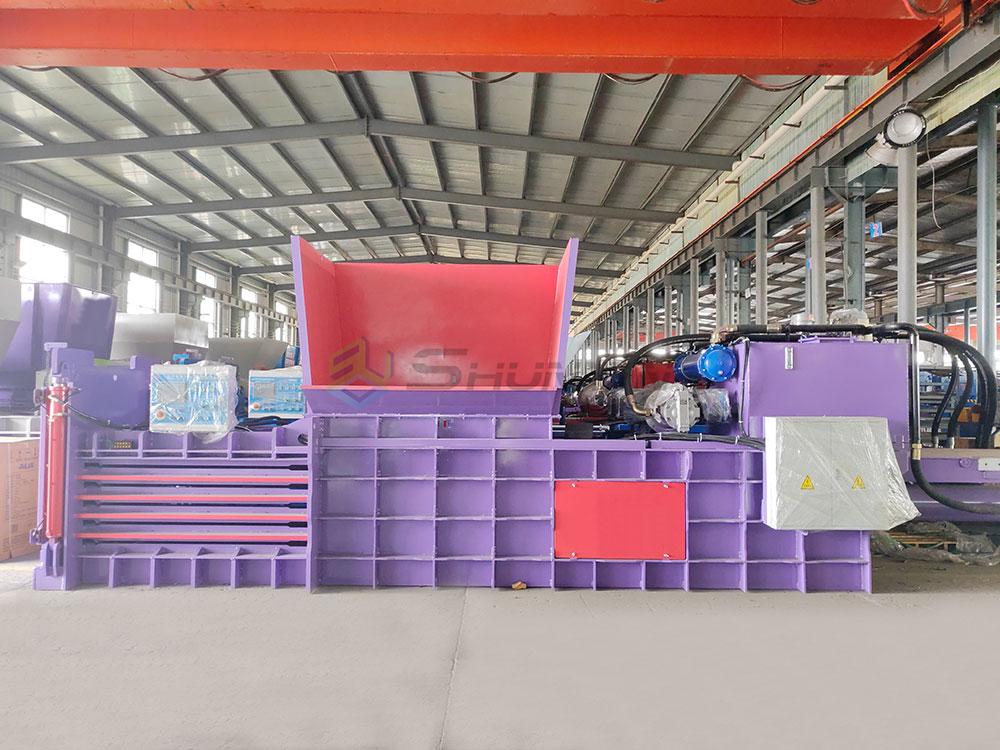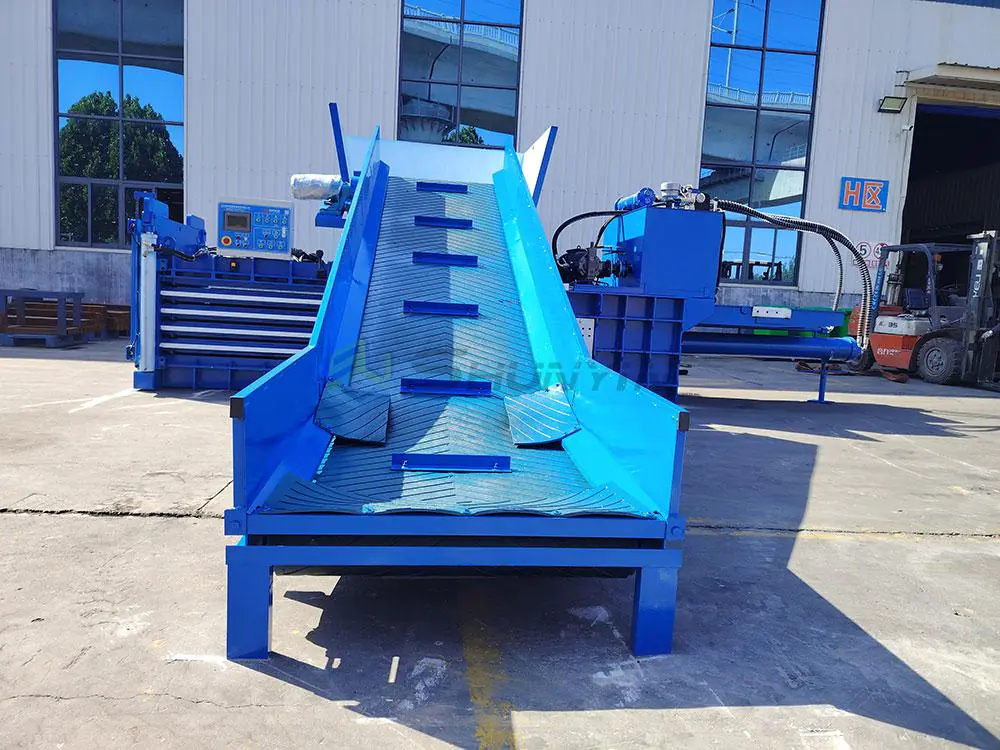
DB Schenker’s Singapore hub cut manual labor for waste handling by 91% using two HA-8800F balers – processing 28 tons/day autonomously while maintaining <0.7mm bale dimension consistency. Their system integrates RFID tracking of bales from compression to recycling partners, reducing documentation labor by 34 hours/week.
Fully automatic horizontal balers reduce logistics labor costs to $0.8-1.4/ton through integrated AI vision (99.5% material recognition accuracy) and adaptive force control. The AutoBale X7 achieves 100% autonomous operation via predictive maintenance algorithms, eliminating seasonal labor fluctuations – crucial in ASEAN regions facing 22% annual warehouse staff turnover.
Discover how next-gen automation redefines material handling economics.
What Is a Baling Press Machine Used For?
Beyond basic compaction: Strategic resource recovery
3-Level Value Chain Transformation
| Activity | Manual Process | Auto-Baler Impact |
|---|---|---|
| Material Identification | Visual inspection (75% accuracy) | Hyperspectral scanning (99.8% purity) |
| Bale Certification | Manual documentation (14min/bale) | Blockchain-secured digital twins |
| Market Access | Local recyclers only | Global commodity exchanges via ISO-cert bales |
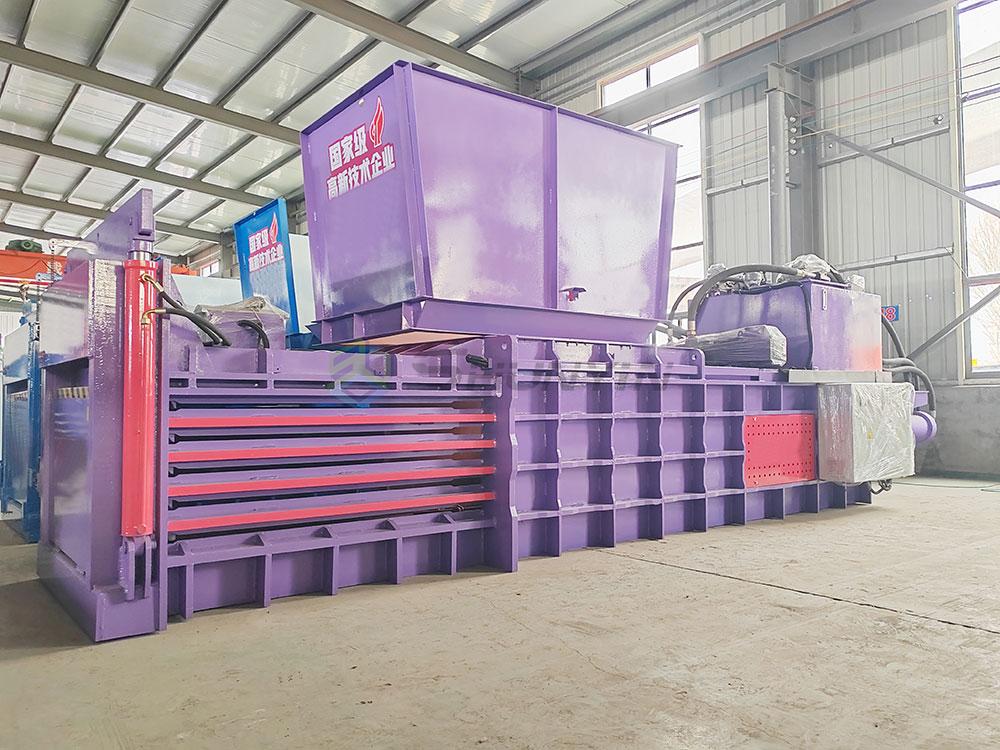
Expanded Profit Channels in Logistics
Yamato Logistics’ Results:
- Direct Sales: Sold baled PET to 9 countries through Alibaba Trade Assurance
- Carbon Trading: Generated $28k/month from verified emission reductions
- Space Monetization: Leased 1,300m² freed space to third-party logistics (3PLs)
Tech Stack Integration:
- ERP system auto-triggers baling when inventory thresholds met
- Digital certificates meet EU Waste Shipment Regulation compliance
What Is the Function of the Baler Machine?
Labor displacement through precision engineering
Workforce Impact Analysis (500+ Facility Survey)
Workforce Roles Eliminated:
- Sorting Labor: AI detects 38 material types (plastic, metals, composites)
- Quality Control: 3D scanners verify bale dimensions ±1.5mm
- Maintenance Techs: Predictive sensors alert 72h before failures
| DHL’s Cost Breakdown: | Cost Factor | Manual | Auto-Baler |
|---|---|---|---|
| Training | $4,200/worker | $900/system | |
| Turnover Loss | 18% productivity loss | 0% impact | |
| Error Recovery | $15k/month | $300/month |

Maintenance Labor Optimization
Preventive Protocol:
- Daily: Auto-lubrication cycles, corrosion sensors check
- Weekly: Hydraulic fluid particle count analysis (<15μm tolerance)
- Monthly: Force calibration using 10-ton test weights
Tokyo Facility Data:
- Unplanned downtime ↓ 94% (3.7 days/year → 0.2 days)
- Technician hours spent ↓ 72% (38h/week → 10.6h)
What Is the Purpose of Baling?
From cost center to profit generator
4-Tier Revenue Model Enabled by Auto-Balers
Tier 1: Core Efficiency Gains
- Labor: $1.2M/year saved
- Transportation: 58% fewer truckloads ($220k/year)
Tier 2: Material Upscaling
| Material | Loose Value | Baled Premium |
|---|---|---|
| HDPE | $380/ton | $595/ton (+57%) |
| Mixed Paper | $45/ton | $117/ton (+160%) |
Tier 3: ESG Incentives
- LEED certification points: 5-9 points achievable
- Carbon credit pricing: $14-$120/ton CO2e (varies by scheme)

Tier 4: Asset Appreciation
- Warehouse valuation ↑ 7-12% with green certifications
- Insurance premiums ↓ 19-28% through fire risk reduction
Singapore Case:
- Achieved TRUE Zero Waste Platinum certification
- Secured $2.3M sustainability-linked loan with 0.8% rate discount
How Does a Baler Machine Work Step by Step?
Zero-touch material flow explained
Phase 1: Intelligent Material Induction
Key Components:
- AI Vision Tunnel
- 21MP cameras @ 120fps
- Detects 0.5mm metal contaminants
- Auto-Density Sensor
Adjusts feed rate based on material compressibility
Phase 2: Dynamic Compression Logic
Force Modulation System
| Material Type | Pre-Press (kN) | Main Press (kN) | Dwell Time |
|---|---|---|---|
| Corrugate | 180 | 520 | 12s |
| PET Bottles | 220 | 680 | 18s |
| Mixed Waste | 250 | 750 | 25s |
Algorithm Training:
- Machine learns from 12,000+ compression cycles
- Continuously optimizes for energy efficiency (±3%)

Phase 3: Autonomous Output Management
- Auto-Tying: 12 wires/bale @ 1,800N tension
- Barcode Tagging: GS1-128 compliant labels
- AGV Integration: Direct loading onto transport
UPS Optimization:
- Reduced bale handling from 7 touchpoints → 0
- 14% quicker dock-to-shipping cycle
Conclusion
Key Financial Drivers for Auto-Balers:
- Labor Cost Avoidance: $230k/year per unit (3-shift operation)
- Throughput Efficiency: Process 9.2 tons/hour vs 1.4 tons manually
- Value Recovery: Material resale premiums up to 160%
Implementation Roadmap:
-
Phase 1 (Months 0-3):
- Pilot test with 3 material types
- Train “Automation Champions” among staff
-
Phase 2 (Months 4-9):
- Integrate predictive maintenance protocols
- Connect to carbon credit platforms
-
Phase 3 (Months 10+):
- Deploy smart contracts for bale sales
- Achieve circular economy certifications
RFP Requirements:
- Minimum 700kN pressing force
- IP69K rating for wash-down environments
- OPC UA connectivity for IIoT integration
Validation Testing:
- 250,000 cycles accelerated life test
- MTBF (Mean Time Between Failures) ≥18,000 hours
- Power fail recovery within 0.8 seconds
Tip: Negotiate maintenance credits with suppliers – leading vendors offer up to $15k in spare parts rebates for 5-year service contracts.


